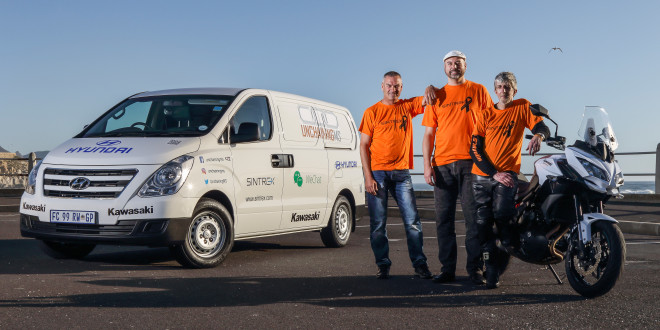Hyundai Automotive South Africa’s H1 Panel Van – one of three derivatives in this popular range – has undoubtedly proven itself as a competent load-lugger that is fit for purpose as it comes with a powerful turbodiesel engine that makes light work of towing.
With its reputation already established in the popular H1 nine-seater wagon, the 2,5-litre common-rail unit was added in this capacious carrier at the beginning of 2011. A 91 mm bore and a 96 mm stroke results in smooth operation from idle to red line, while a 16-valve 4-cylinder and all-aluminium construction confirm it to be of a thoroughly modern design. Headline numbers remain unchanged and on a diet of 500 ppm diesel it produces 120 kW at 3 800 r/min and 392 Nm at 2 000 r/min.
A drag coefficient of just 0,34 aids fuel efficiency, the steeply raked bonnet and A-pillars giving it an exceptionally aerodynamic profile. In the real world – as opposed to ideal laboratory conditions that are impossible to replicate – users can expect consumption in the region of 8,5 litres/100 km and CO2 emissions of 225 g/km.
A total luggage volume of four cubic metres (that’s four thousand litres, or 20 baths filled to the brim) means fewer trips, and fewer trips mean less time and money spent.
But above all, a workhorse needs to be “fit for purpose” and that’s been top of the design agenda:
- It is rear-wheel-driven, so that when fully laden the wheels that are carrying the load are also providing traction, leaving those at the front free to handle steering duties.
- Sliding doors are fitted on either side so no matter where you’re forced to park, loading and unloading can be carried out conveniently and safely. It also means the interior volume can be more completely utilised, and every nook and cranny filled.
- Minimal wheel arch intrusion means a load measuring 1,25 m in width can lie against the floor. A sill height of just 550 mm makes for easy loading.
- From the hinged rear doors to the reinforced bulkhead separating the cargo from crew (with a glass upper section to add visibility and enabling the load to be monitored) there’s a 2,4 m load length.
- The load area features a total of eight beefy lashing points, so that cargo can be securely stowed. And when the sun sets the work can go on, thanks to a powerful interior light above the back doors.
- With leaf-spring rear suspension, the H1 panel van is rated to carry 1 100 kg and tow up to 1 500 kg.
Safety was another design fundamental and thanks to the semi-bonnet layout, there is space for a substantial front crumple zone. In addition, the H1 has a series of reinforced ‘rings’ aligned with the key body pillars and linked with them across the floor and roof, as well as side impact protection beams in the doors.
An all-disc braking system with four-channel ABS and electronic control of the fore/aft distribution of hydraulic pressure ensure maximum retardation even when fully laden. Dual airbags and outer front seatbelts equipped with pre-tensioners are fitted.
With its supportive and height-adjustable seat, adjustable steering column, boldly-marked instruments, large glass area and generously proportioned exterior mirrors and electric windows with auto-down for the driver, the workload of the man – or woman – behind the wheel is minimised; keeping fatigue at bay. So too does the benign handling characteristics and confidence-inspiring road holding, with accurate rack and pinion steering. Adding to its driver appeal is a remarkably agile 11,2 m turning circle.
Thanks to a bench type passenger seat that adjusts separately from the driver’s, a third crew member can be comfortably accommodated. When the middle seat is vacant its backrest can be folded forward to reveal a moulded storage area with additional cup holders. Oddment space is a strong point generally, and dual glove compartments are complemented by upper and lower door pockets on both sides.
The option list is generous and includes central locking, air conditioning, alarm/immobiliser and a sound system (for which the vehicle is pre-wired) to enable owners to spec the vehicle to suit their exact requirements.
The new turbodiesel panel van is the logical combination of two proven entities from the Hyundai stable: the incredibly torquey yet frugal 2,5-litre powerplant and the generously proportioned and user-friendly H-1 body style. For business users this combination will represent a match made in heaven.
Pricing includes Hyundai’s 5 year/150 000 km warranty and roadside assistance plan, as well as a cost-busting 5 year/90 000 km service plan.
 ..:: AUTO REPORT AFRICA ::..
..:: AUTO REPORT AFRICA ::..




